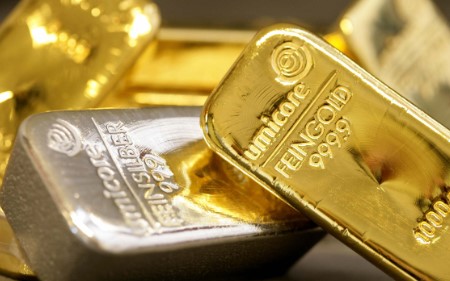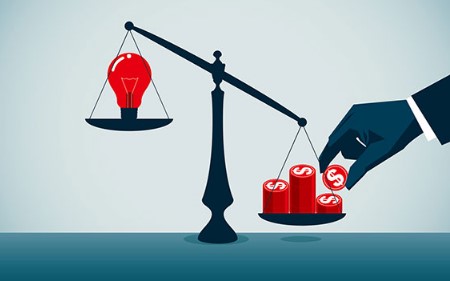Gold news
 27 / 06 / 22
Visitors: 558
27 / 06 / 22
Visitors: 558
Five arguments support this commitment to money:
1- Historical evolution of the gold/silver ratio.
This ratio measures the number of ounces of silver required to purchase one ounce of gold. It is determined by dividing the spot price of gold by the spot price of silver at any given time.
Historically, this ratio gives an idea of how the market values gold and silver at any given time, which metal is the most popular among investors, and which may be undervalued, overvalued or overvalued. Thus, the higher the ratio, the more ounces of silver will be required to buy an ounce of gold and vice versa.
Despite the volatility that this value has shown over the past 30 years, its average value is close to 60. According to financial experts, this means that when the ratio is above 60 points, buying silver is a good decision from the historical point of view.
In 2020, this score has risen to 120 points, double the average for the past three decades. This indicates that this is one of the best times to sell gold and buy silver. In fact, over the next 12 months, silver appreciated significantly more than gold.
Now this ratio is hovering around 85 points, which is above the average for the past 30 years. This suggests that it is now wise to invest in silver. If it falls below 50 pips, it's time to sell silver and buy gold, as gold tends to rise in price when it hits these levels.
2- Increased volatility
While volatility is not a desirable quality to invest in, it can sometimes work in your favor. Investors who are looking for assets that move faster than gold will find silver attractive as it has many opportunities to outperform gold.
The silver market is significantly smaller than the gold market, so it moves in a wider range. That's why young investors, who are not afraid of volatility, are attracted to silver, which can outperform gold in a bull market for precious metals.
This was the case, for example, in 2020, when the dollar price of gold rose by 24% and silver by a staggering 47.5%. The average volatility of silver typically exceeds 30%, which is twice the average volatility of gold, which is 15.8%.
3- Decreasing stock
Today, the accumulated gold reserve is estimated at about 200,000 tons. Most of the gold mined from the bowels of the earth is processed and not consumed by industry. Silver, on the other hand, has a reserve of about two million tons, of which 40% is used for industrial purposes, 40% as a raw material for jewelry and silverware, and a small part in the form of bullion and bullion coins.
Given the inadequacy of these silver reserves, bars and coins are often hard to come by during the months when demand for the metal is highest, so investors have to wait for refineries to restore production.
If industrial demand continues to rise, the silver market may face a supply shortage, which could be a factor in favor of the metal's price growth.
4- Increasing number of industrial applications
Silver has a very large number of industrial applications, far more than gold, from the medical to the chemical sector, including the production of solar panels. The unique properties of silver cannot be replicated by other metals, which is a huge advantage over gold.
Devices such as computers, cell phones, vehicles, etc. contain money. Many of its applications, such as solar panels and electric vehicles, are growing sectors that will need a lot of raw materials in the coming years.
5- Development of electric vehicles
One of the new emerging markets that will require huge demand for money will be electric vehicles. At the moment, this is a fairly small market, but it will expand significantly in the next few years.
Virtually every component of an electric car requires a small amount of money. Demand from electric vehicle manufacturers is estimated to exceed 90 million ounces (2,800 tons) per year by 2025. This represents almost 10% of the total demand.
This increase, coupled with limited supply from mines, could lead to a shortage in the silver market over the next few years.
A complete list of unscrupulous brokers, that we do not recommend working with is available here.







